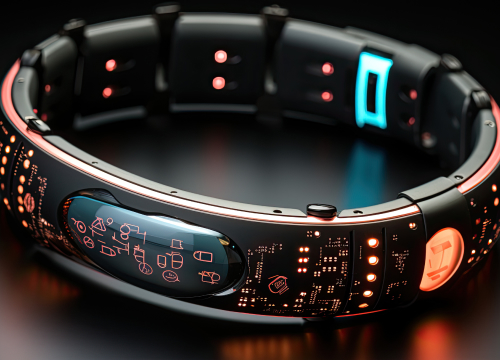
Top Seven Mistakes to Avoid in PCB Design

The first concept of printed circuit boards (PCB) was proposed by the German engineer Albert Hansen in 1903. Today, these are an essential element of almost every electronic device. They can be made both manually, using dielectric and ferric chloride, or with the help of special automation equipment in the factory (Read more: Best Software for PCB Design). Either way, for the correct and uninterrupted operation of the board, it is necessary to observe a number of rules – from the initial design stage to the final stages of production. Below we discuss seven typical errors that can be significant impediments to the performance of a PCB.
Most Common Problems that Can Make a PCB Non-operational
So, let us review the faults that can happen when designing and manufacturing printed circuit boards.
1. Solder cavities
The formation of hollows in solder joints is one of the phenomena inherent to reflow soldering. Cavities negatively affect the mechanical properties of soldered joints and the thermic behavior of electronic components and obstruct heat dissipation.
The first types of hollow that potentially reduce the durability of a PCB are called “champagne bubbles.” They appear in the interface plane between the contact pads of the board and the solder and occur when copper on the surface of contact pads under the IAg finish layer starts caverning up. They can be eliminated by strict adherence to the compositions of all solutions and etchants used to create the IAg coating, as well as continuous monitoring of other critical parameters of the process of applying finishes to the surface of the board.
Hollows of the next kind appear due to the presence of microtransitions in the contact pads. The formation of such cavities can be kept to a minimum by closing the microtransfer holes with a top coat or completely filling them with solder paste, performing screen printing in two passes.
There are also voids, called “pricks,” which are located inside or immediately above the layer of intermetallic compounds. Currently, these are successfully eliminated by applying automated control systems to the process of depositing the copper coatings.
And, finally, micro-hollows that occur in compounds between copper and high-tin solders, including SAC and tin-lead solders, due to the Kirkendall effect. They are formed due to the high-temperature aging or during thermocycling of soldered joints and cannot be detected using x-ray control. One of the ways to reduce the number of Kirkendall micro-voids is to alloy the solder with certain elements, in particular zinc.
2. Corrosion of conductive areas
In the manufacture of PCBs, one of the central tasks is the need to tin the tracks. This is necessary to ensure that conductors bind with solder solidly and to protect the tracks from corrosion.
The most used conductive material in PCB production currently is copper. Its disadvantage is its susceptibility to oxidation; therefore, usually, copper conductors are covered with additional protective materials (for example, to strengthen the coating structure and increase corrosion resistance, bismuth is often added to a chemical tinning solution). However, when trimming the PCB, you can involuntarily expose the copper layer and thus significantly reduce its service life. Moreover, if this exposed area randomly contacts a conductor, a short circuit may occur on the PCB. In order to prevent this problem, we recommend making sure that a certain distance is observed between areas with a copper coating and the edges of the board.
3. Pieces of excess metal
If you do not adhere to the basic rules of PCB manufacturing (for example, by corroding a very long thin track, or exceeding the allowable depth for part cutting), so-called “chips” can form in the process of applying a metal layer. These chips, in turn, often form redundant connections or branches from planned conductive routes. Obviously, such cases violate the predictability of operation or may even provoke a short circuit. Whatever it may be, such chips potentially reduce the service life of the board and make a device prone to failures. In order to avoid this, it makes sense to create a design without long tracks and to observe the maximum cutting depth for individual sections.
4. Not using solder masks in PCB manufacture
A solder mask is a layer of a durable material designed to protect the conductors from solder/flux penetration and from overheating during soldering. The mask covers the conductors and leaves contact pads and knife connectors open. The method of applying the solder mask is similar to applying a photoresistive mask when creating a microprocessor. However, there are situations in which such a mask is absent in some parts of the board (in particular, this sometimes happens due to a change in the scale of the PCB pattern). This can result in oxidation of the metal and a reduction in the service life of the board.
5. Uneven copper deposition in perforations
In order to ensure the passage of current on both sides of the PCB, through holes are made on its surface, which are subsequently deposited with a layer of copper. In addition, to ensure a uniform metallic coating, etching is carried out. In practice, these two processes can be implemented with a number of errors that may result in the formation of hollows in the copper layer. This, in turn, would obstruct the normal running of current through the board thus making it inoperative. The causes of uneven deposition of copper may be pollution of the dielectric, air trapped during the etching process, or improper drilling. It is logical that in order to avoid these factors, the materials used in the deposition process must be thoroughly cleaned (decreased), and the correct direction and speed of drilling must be observed.
6. Acid accumulation
PCB design elements in which acid accumulates due to surface tension during the etching process are called acid traps. These hold the acid for a longer time than is acceptable, resulting in excessive etching, which inhibits the normal flow of current through connections. From a practical point of view, acid traps are formed when the PCB pattern itself includes sharp corners. Typically, this problem occurs due to erroneous code in the circuit design programs; however, some newcomers who manually develop PCB designs also encounter these issues.
7. Electromagnetic Interference (EMI)
Electromagnetic interference is often caused by improper PCB design. To reduce EMI on a PCB, it is necessary to group elements according to their functional purpose – for example, analog and digital blocks, power supply section, low-speed circuits, high-speed circuits, etc. In addition, it makes sense to reduce the number of square angles in the joints as well as to use a metal container and shielded cables to absorb interference.
Summary
In order to avoid supplying defective boards, we recommend conducting a DFM (Design for Manufacturability) check, which will allow the detection of design flaws up front. If you want to get a warranty for your PCB design quality, contact us. We carefully monitor all PCB parameters during design and production to fully comply with the requirements for their further operation (See this case as an example:In-building Radio Communications System with Cloud Service). As a result, you will receive a fully functional device that will work smoothly and will not cause the breakdown of expensive components.



